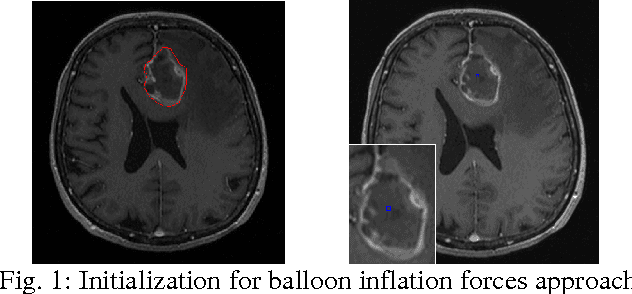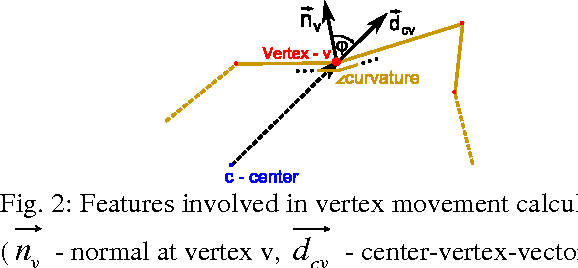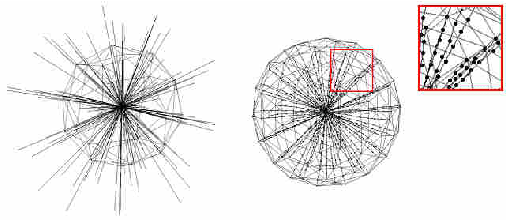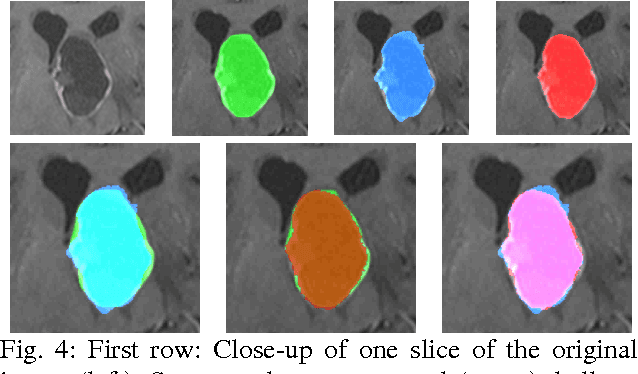Barbara Carl
Preoperative Volume Determination for Pituitary Adenoma
Feb 05, 2016Abstract:The most common sellar lesion is the pituitary adenoma, and sellar tumors are approximately 10-15% of all intracranial neoplasms. Manual slice-by-slice segmentation takes quite some time that can be reduced by using the appropriate algorithms. In this contribution, we present a segmentation method for pituitary adenoma. The method is based on an algorithm that we have applied recently to segmenting glioblastoma multiforme. A modification of this scheme is used for adenoma segmentation that is much harder to perform, due to lack of contrast-enhanced boundaries. In our experimental evaluation, neurosurgeons performed manual slice-by-slice segmentation of ten magnetic resonance imaging (MRI) cases. The segmentations were compared to the segmentation results of the proposed method using the Dice Similarity Coefficient (DSC). The average DSC for all datasets was 75.92% +/- 7.24%. A manual segmentation took about four minutes and our algorithm required about one second.
A Comparison of Two Human Brain Tumor Segmentation Methods for MRI Data
Mar 10, 2011



Abstract:The most common primary brain tumors are gliomas, evolving from the cerebral supportive cells. For clinical follow-up, the evaluation of the preoperative tumor volume is essential. Volumetric assessment of tumor volume with manual segmentation of its outlines is a time-consuming process that can be overcome with the help of computerized segmentation methods. In this contribution, two methods for World Health Organization (WHO) grade IV glioma segmentation in the human brain are compared using magnetic resonance imaging (MRI) patient data from the clinical routine. One method uses balloon inflation forces, and relies on detection of high intensity tumor boundaries that are coupled with the use of contrast agent gadolinium. The other method sets up a directed and weighted graph and performs a min-cut for optimal segmentation results. The ground truth of the tumor boundaries - for evaluating the methods on 27 cases - is manually extracted by neurosurgeons with several years of experience in the resection of gliomas. A comparison is performed using the Dice Similarity Coefficient (DSC), a measure for the spatial overlap of different segmentation results.
Evaluation of a Novel Approach for Automatic Volume Determination of Glioblastomas Based on Several Manual Expert Segmentations
Mar 08, 2011Abstract:The glioblastoma multiforme is the most common malignant primary brain tumor and is one of the highest malignant human neoplasms. During the course of disease, the evaluation of tumor volume is an essential part of the clinical follow-up. However, manual segmentation for acquisition of tumor volume is a time-consuming process. In this paper, a new approach for the automatic segmentation and volume determination of glioblastomas (glioblastoma multiforme) is presented and evaluated. The approach uses a user-defined seed point inside the glioma to set up a directed 3D graph. The nodes of the graph are obtained by sampling along rays that are sent through the surface points of a polyhedron. After the graph has been constructed, the minimal s-t cut is calculated to separate the glioblastoma from the background. For evaluation, 12 Magnetic Resonance Imaging (MRI) data sets were manually segmented slice by slice, by neurosurgeons with several years of experience in the resection of gliomas. Afterwards, the manual segmentations were compared with the results of the presented approach via the Dice Similarity Coefficient (DSC). For a better assessment of the DSC results, the manual segmentations of the experts were also compared with each other and evaluated via the DSC. In addition, the 12 data sets were segmented once again by one of the neurosurgeons after a period of two weeks, to also measure the intra-physician deviation of the DSC.
 Add to Chrome
Add to Chrome Add to Firefox
Add to Firefox Add to Edge
Add to Edge